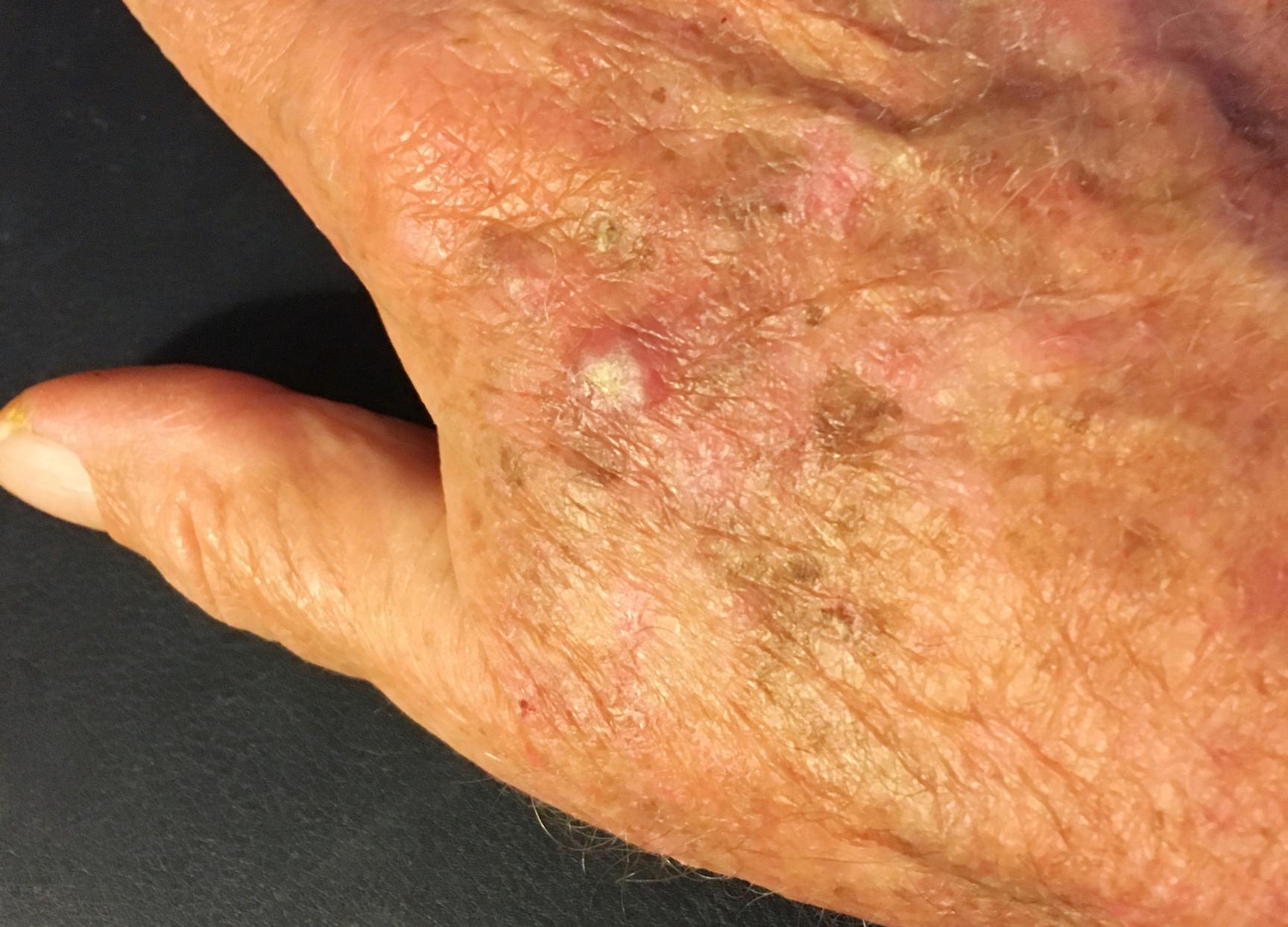Actinic Keratosis
Actinic keratosis is a precancerous skin condition that causes dry, rough, scaly patches to form on the skin. There are several treatments available to effectively treat it and prevent cancer from developing.

What is actinic keratosis?
Actinic keratosis, also called solar keratoses, causes dry, rough, scaly patches of skin to form. It’s a precancerous skin condition, which means that if it is left untreated, it could turn into a type of skin cancer called squamous cell carcinoma. It’s therefore important to see a dermatologist as soon as you can if you notice any changes in your skin so that you can receive a diagnosis and treatment if needed.
What are the symptoms of actinic keratosis?
Actinic keratosis often develops on areas of the skin that get the most sun exposure, including the face, lips, ears, forearms, scalp, neck and back of the hands.
Signs and symptoms of actinic keratoses include:
Dry, rough and scaly patches of skin
Raised spots that may look like a rash or acne breakout
Scaly patched from 1cm to 2cm in size
Scaley patches that are skin-coloured, pink, red, brown, white, yellow or grey
Itchy, burning, bleeding, sore or crusty areas of skin
A dry, scaly lip that never heals
White patches or loss of colour on the lips
A growth on the skin that looks like an animal's horn
What causes actinic keratosis?
The most common cause of actinic keratosis is exposure to skin-damaging ultraviolet (UV) light from the sun or indoor tanning equipment.
Factors that may increase your risk of developing actinic keratoses include:
Having blonde or red hair
Having blue or green eyes
Having a fair or light complexion
A history of multiple or severe sunburns
A weakened immune system
Being over 40 years old
Living in a sunny country
Working outdoors
Using tanning beds
How is actinic keratosis diagnosed?
At OneWelbeck, our consultant dermatologists can make a diagnosis of actinic keratosis by carefully examining your skin. To confirm their findings, they may need to take a small biopsy of your skin to send to the lab for analysis under a microscope.
What are the treatment options for actinic keratosis?
In most cases, actinic keratosis can be treated and cured, but there is a small possibility that it will come back, so regular skin checkups are recommended after treatment.
The most appropriate type of treatment for actinic keratosis depends on the symptoms and appearance. Your consultant will be able to recommend the most effective treatment for you, which may include:
Prescription creams and gels
Cryotherapy - to freeze the patches so that they turn into blisters and peel off the skin
Chemical peels - these destroy unwanted patches in your top layer of skin, and as the skin heals, a new, healthy layer of skin will grow
Laser surgery - can be used to remove patches from the face, scalp and lips
Surgery - to cut out or scrape away the patches
Photodynamic therapy (PDT) - a cream is applied to the patches and light therapy destroys precancerous skin cells
